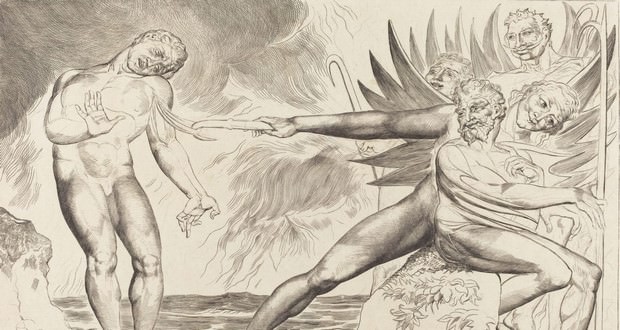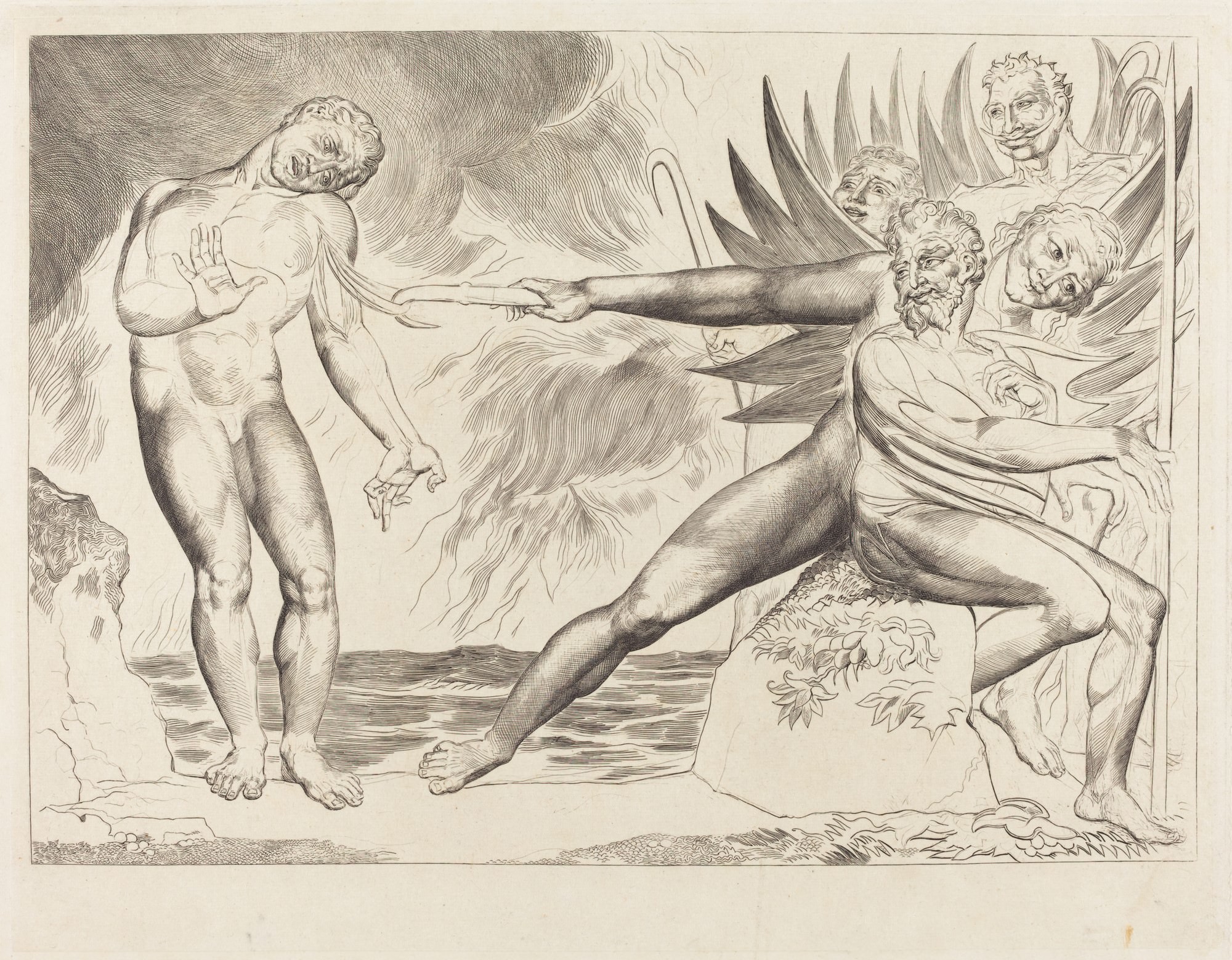
William Blake was a painter and English poet, that fits and is usually associated with Romanticism (more specifically, as a pre-romantic), While all of their production has also aspects belonging to Symbolism.
Blake was eccentric. His productions have been widely rejected during the period in which they were created, for they were beyond any current stylistic standard. And if his paintings and poetry have been frowned upon, it is worth mentioning that the artist himself was considered crazy and was constantly scorned by his contemporaries. However, Blake never seemed to bother with targeted labels and attributes to him or to his artistic material.
"Blake was the first artist, after the Renaissance, who consciously rebelled against the accepted standards of tradition, and we can not fault his contemporaries because considered shocking ". (GOMBRICH, 1999, p. 490).
The usual detachment of English artist with the norms and customs of his time, It resulted in great material poverty, and it is said that he just did not die of hunger because few people believed in its potential and so, They helped him to survive in the everyday.
Blake was certainly one of the most hermetic artists who ever lived. Its emphasis on religious and mystical themes expressed through figurations, a fact that complicates logical understanding of his works. It is a singular artist because might only be read / clear questioned, when the viewer-distance matter and turns off the rationality, since Blake used is a language that translates a spiritual way. Perhaps this is where lies his genius, as the reason seems to fail before his works. And, moreover, this failure of logic in understanding attempts of the artist's productions, They seem to have been purposely built, já Blake, openly faced with refuse excessive advancement of rationality. The art, him though, belonged to an inner field, the spirit, intuition. Giulio Carlo Argan (1988, p. 35) mentions about the way the English artist interpreted the art: "A Arte, according to him (Blake), intuitive knowledge is not of individual things, but the eternal and superhuman forces of creation ".
It should be noted that Blake lived in a historical period of great events, having witnessed the Industrial Revolution and the Enlightenment. This context led to believe in art as an activity that, naturally, It lies below the limits of the physical field, materials and scientific. The art is elevated, It is transcendence and is exactly what the reason not explained and the reason is not part.
References:
- ARGAN, Giulio. Modern Art. 1988. São Paulo: Companhia das Letras.
- GOMBRICH, Ernst. A História da Arte. 1999. Rio de Janeiro: LTC.
[one_half]
Sign up to receive Event News
and the Universe of Arts first!
.
JULIANA VANNUCCHI
Sorocaba – São Paulo
Facebook Profile | Facebook Fan Page
Website Philosophical Collection
E-mail: ju.vannucchi@hotmail.com
[/one_half][one_half_last]

Group on Facebook | Instagram
LinkedIn | Facebook | Twitter
[/one_half_last]


